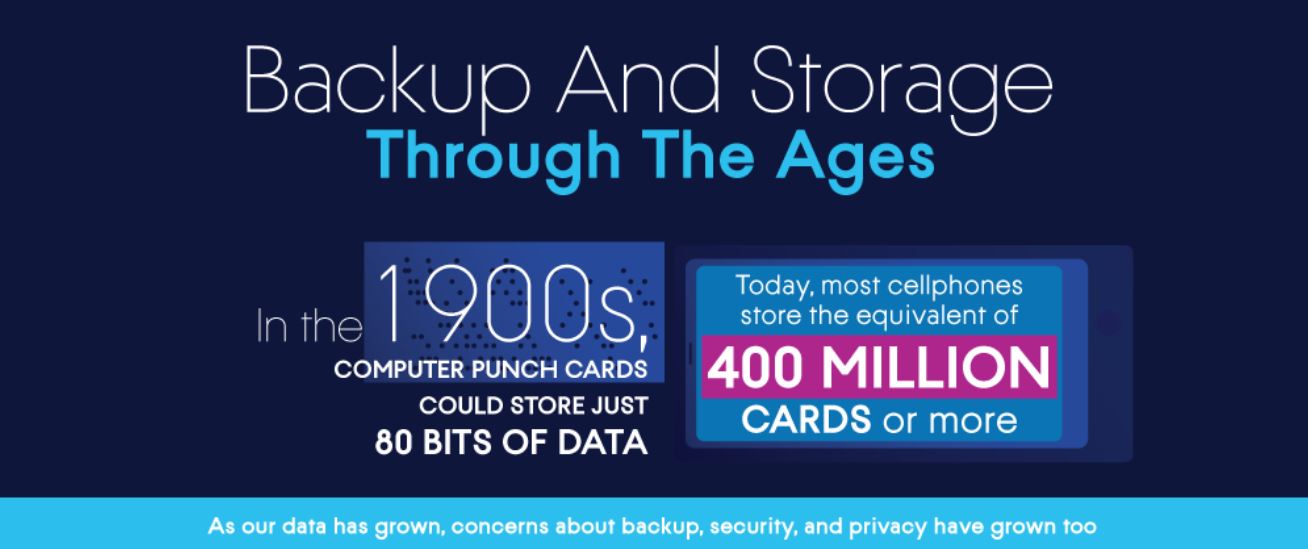With new tech arising, many are concerned about the future of cybersecurity, backups, and internet privacy. A good way that we can help predict what might come in the future is to take a look in the past to see challenges overcome and threats handled. Data storage in digital form, as compared to a tape or a drum, was first made by IBM with the RAMAC 305 released in 1956. It was a magnetic disk drive that stood over 16 feet tall and weighed over a ton and could hold only 3.75 MB of data. The floppy disk, created by IBM, allowed people to share, buy, load data between each other and it first hit store shelves in 1971 with a 80 KB storage size.
In 1963, semiconductor random access memory, or RAM, was patented by Robert Norman and Fairchild Semiconductor. Over the next five years RAM storage grew by 32 times – reaching 256 bits per chip by 1968. This use of semiconductors allowed memory devices to continue to shrink from room sized to pocket sized and allowed personal computers to flourish.
Computers being introduced to everyday work creating backups in case of power outage and defending against cyber attacks became more and more relevant. The Rivest-Shamir-Adleman Algorithm, or RSA, was the first patented cybersecurity tech in the U.S. in 1983 and was a type of public-key cryptography that formed the basis for data encryption. This allowed for previously impossible secure email and other online transactions. But this rudimentary encryption system had a lot to go up against. The Morris Worm in 1988 infected 1 in 10 internet connected computers within the first 24 hours of launch and it caused many businesses to wipe entire systems to erase the worm. This disastrous calamity caused a new generation of both hackers and of virus detection.
Find out how old tech is helping us prepare for the next wave of cyber protection here:


